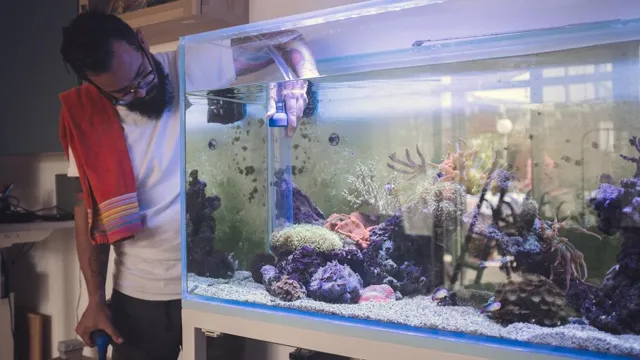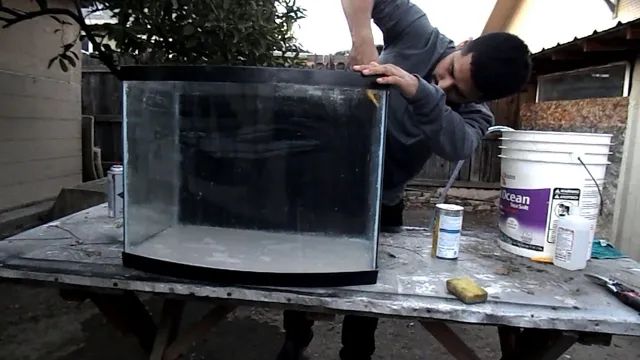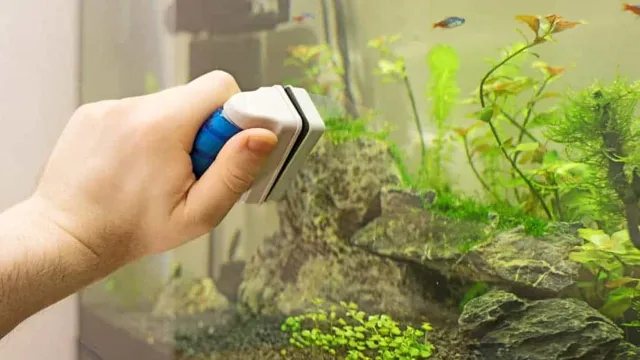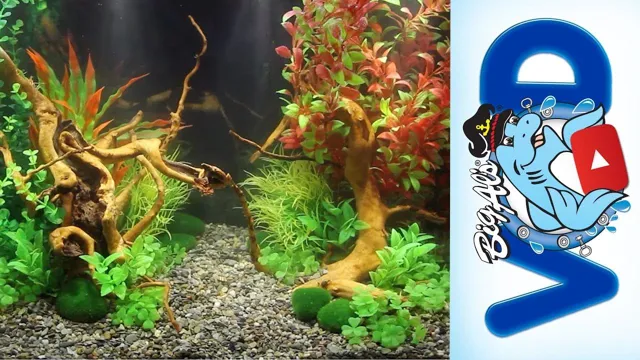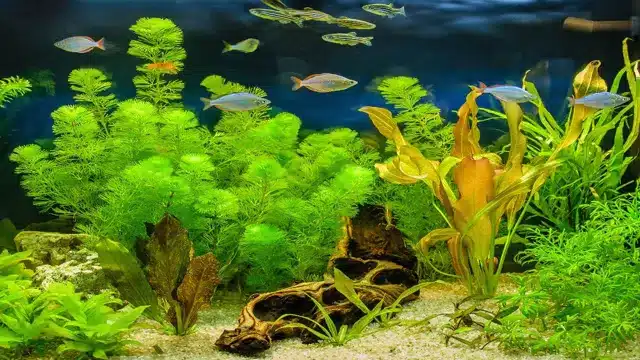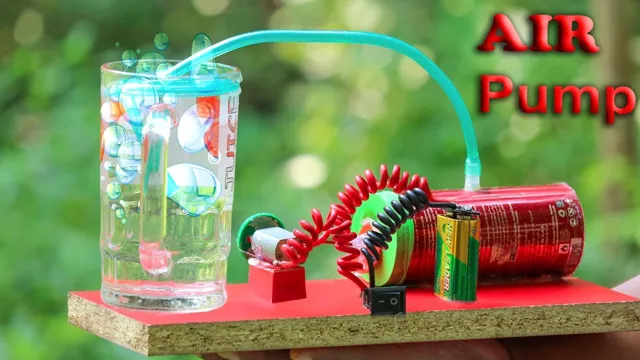Are you tired of waiting for your aquarium sand to dry out after a deep clean? Fortunately, drying out your aquarium sand is a relatively simple process that requires a little time, patience, and effort. In this blog post, we’ll provide you with step-by-step instructions on how to dry out your aquarium sand and avoid the common pitfalls that many beginners encounter. By the end of this article, you’ll be equipped with the knowledge and confidence to dry out your aquarium sand quickly and efficiently, ensuring a clean, safe, and appealing aquarium environment for your fish and aquatic plants.
So, let’s dive right in!
Materials Needed
If you’re looking for a way to dry out your aquarium sand, then you’re in the right place. Drying out aquarium sand is a fairly simple process, and all you need are a few basic materials. First, you’ll need a clean, dry container to hold the sand.
This can be a plastic bin or even a large, sturdy bag. Next, you’ll need a clean, dry surface to spread the sand out on. This could be a large baking sheet or a piece of cardboard.
Finally, you’ll need some time and patience, as the sand will need to air dry completely before it’s ready to use. Simply spread the sand out in a thin layer on your chosen surface and let it air dry for a few days, mixing occasionally to ensure even drying. Once the sand is completely dry, it’s ready to be added back into your aquarium.
Remember to rinse it thoroughly before use to remove any dust or debris that may have accumulated during the drying process. With these simple steps, you’ll have perfectly dry and clean aquarium sand in no time!
Empty Container
To create an empty container, you don’t need a lot of materials, just an open mind and a bit of creativity. To start, you will need a base material to make the container. This can be anything from a cardboard box to a plastic jug, or even a wooden crate.
Once you have your base material, you can begin to decorate it with anything that you like. This could include stickers, paint, fabric, or even bits of old newspaper or magazine pages. The key is to let your imagination run wild and create a container that is unique and personal to you.
Remember, an empty container can serve many purposes, from holding your favorite trinkets to being used as a flower pot. So have fun and enjoy creating your very own empty container.
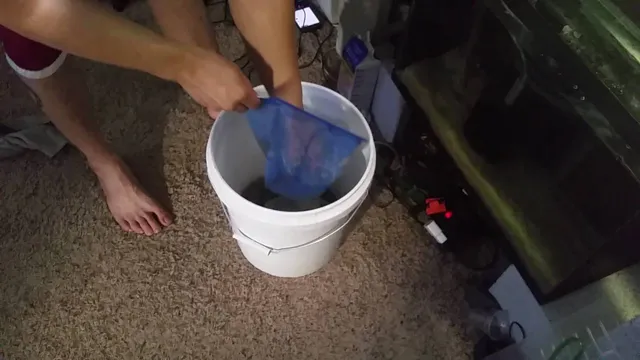
Aquarium Sand
Aquarium sand is a crucial element for a thriving fish tank habitat. However, choosing the right type of sand can be quite challenging for beginners. Firstly, you need to decide on the color and grain size that you want, which will depend on the aquarium’s aesthetic and the type of fish you have.
Then, you must select the appropriate substrate material for your aquarium to ensure your fish stay healthy and safe. Some of the materials needed include aquarium sand, a bucket, a hose, and a cleaning brush. When choosing the sand, make sure that it does not contain any harmful chemicals that could harm your fish or alter the water’s pH levels.
Once you have acquired the necessary materials, rinse the sand thoroughly to get rid of any dust or debris before placing it in the tank. Using aquarium sand is a simple yet crucial step in maintaining a healthy and beautiful aquatic environment for your fish to thrive in.
Sunlight or Heat Source
When it comes to growing plants indoors, providing the proper amount of light is crucial for their growth and development. A common dilemma for indoor plant enthusiasts is whether sunlight or a heat source is better for their plants. The answer is a bit tricky as it depends on several factors such as the type of plant, its growth stage, and the environment.
An ideal option would be to provide both natural sunlight and additional heat, but this may not always be possible. If you are unable to provide sunlight, you can use a grow light that simulates natural sunlight. These lights are available in different spectrums to cater to the plant’s specific needs.
On the other hand, if your home or office is too cold, you may need to supplement with additional heat to maintain the ideal temperature for your plant to thrive. Heat pads and heat-emitting grow lights are two popular options for maintaining the right temperature. Ultimately, it boils down to understanding your plant’s specific needs and providing the best possible environment for them to flourish.
Steps to Dry Out Aquarium Sand
If you’ve recently cleaned your aquarium using sand and now find yourself wondering how to get it to dry out so you can replace it in the tank, there are several steps you can take. The first is to spread the sand out in a thin layer on a dry surface. The surface should ideally be in a warm and dry area, such as a sunny spot outside on a warm day or indoors next to a heat source. (See Also: How Strong Heater on 55 Gallon Aquarium Should You Choose?)
Stir the sand occasionally to help speed up the drying process. Another option is to place the sand in an oven set to a low temperature. However, make sure to keep an eye on the sand as it can overheat and become unusable.
You can consider using a fan or a dehumidifier to speed up the process, but be aware that it may take several days for the sand to fully dry out. Once the sand is completely dry, you can replace it in the aquarium and your fish can enjoy their clean environment once again.
Step 1: Remove Sand from aquarium
If you want to dry out your aquarium sand for cleaning or replacement, there are several steps you need to follow. The first step is to remove the sand from the aquarium. You can do this by using a siphon or scoop to transfer the sand into a bucket or container.
Be careful not to disturb the plants or decorations in the aquarium, as you don’t want to create more work for yourself. Once the sand is in the container, you can clean it by rinsing it under running water to remove any debris or waste. Spread the sand out in a thin layer to help it dry faster.
This can take anywhere from a few days to a week, depending on the humidity and temperature in your home. Once the sand is completely dry, you can add it back into your aquarium or replace it with new sand. Remember to rinse the sand before adding it back into the aquarium to minimize cloudiness.
Overall, drying out aquarium sand can be a time-consuming process, but it’s important for maintaining a clean and healthy environment for your fish and plants.
Step 2: Place sand in container
Once you have removed the aquarium sand, it’s time to start drying it out. The first step is to find a suitable container where you can place the sand. A large plastic container or bucket will work just fine.
Fill the container with the sand, making sure that it is spread out evenly. You may need to move the sand around a bit to ensure that it will dry out evenly and completely. This is an important step because if the sand is clumped together, it will take much longer to dry out.
Once you have evenly placed the sand in the container, it’s time to move on to the next step. Don’t worry, we’ll be finished in no time and your aquarium will be looking great in no time!
Step 3: Spread sand out evenly
Spread sand After rinsing the sand thoroughly, the next step in drying out aquarium sand is to spread it out evenly. One way to do this is to lay it out on a clean and flat surface, such as a baking sheet or a piece of cardboard. Make sure that the sand is spread out in thin layers to ensure that it dries out properly.
In addition, it’s important to place the sand in a well-ventilated area to ensure that it dries out completely. This allows the moisture to evaporate and prevents any mold or bacteria from growing. If possible, you can place a fan nearby to help circulate the air and speed up the drying process.
Remember, it’s crucial to spread the sand out evenly to ensure that it dries out properly before using it for your aquarium.
Step 4: Allow sand to sit
After rinsing your aquarium sand thoroughly, it’s important to let it sit for a little while to dry out. This step is crucial in ensuring that the sand is completely free of any remaining moisture, which can lead to bacterial growth and other issues in your fish tank. Generally, it’s best to allow the sand to sit for at least 24-48 hours, depending on the humidity levels in your home.
During this time, you may notice that the sand clumps together slightly, which is a normal part of the drying process. Once the sand is fully dry, you can proceed with adding it to your aquarium and enjoying your beautiful, healthy tank. Remember to always handle your aquarium sand carefully and take steps to ensure that it stays clean and free of debris.
With proper care and attention, your aquarium sand can provide a fantastic substrate for a wide range of aquatic creatures. (See Also: How to Go to Shedd Aquarium: A Comprehensive Guide for Visitors)
Step 5: Stir sand occasionally
When it comes to drying out aquarium sand, stirring it occasionally is a crucial step to ensure that the sand dries out evenly. By stirring the sand, you are allowing air to circulate throughout the entire container, preventing any moisture from building up and slowing down the drying process. You don’t need to stir the sand constantly, but make sure to do it every so often throughout the day.
It is also essential to make sure that all parts of the sand are fully exposed to sunlight or heat sources, allowing them to dry out as well. By following this step, you can ensure that your aquarium sand will be completely dry and ready for reuse in no time. So, don’t forget to stir your sand occasionally and speed up the drying process!
Step 6: Check for dryness
After rinsing your aquarium sand with water, it’s important to check for dryness before you add it back into your tank. To do this, spread the sand evenly on a flat surface and leave it to air dry for a day or two. This will allow any remaining moisture to evaporate, leaving the sand completely dry and ready to use.
Avoid speeding up the drying process with heat or direct sunlight, as this can cause the sand to become brittle and prone to breaking. Once the sand is dry, you can give it another quick rinse with water before placing it back into your aquarium. By taking the time to properly dry out your aquarium sand, you’ll ensure that your tank remains clean and healthy for your fish and plants to thrive.
Step 7: Use or Store
Aquarium Sand Once your aquarium sand is fully dry, it’s time to decide whether to use it immediately or store it for later use. If you plan on using it right away, make sure to clean it thoroughly with warm water to remove any remaining salt or debris. This is especially important if your sand was previously used in a saltwater aquarium.
On the other hand, if you plan on storing it, make sure to store it in a dry, airtight container to prevent any moisture from seeping in. This will help to keep the sand clean and dry until you’re ready to use it again. Just remember to periodically check on the sand if it’s been stored for a long period of time to ensure it’s still in good condition.
With these simple steps, you’ll be able to effectively dry out your aquarium sand and have it ready for use whenever you need it.
Tips for Drying Out Aquarium Sand
If you’re wondering how to dry out aquarium sand, there are a couple of approaches you can take. One simple method is to spread the sand out evenly on a flat surface, such as a large tray or baking sheet, and place it in a sunny spot outdoors. The heat from the sun will help evaporate any moisture in the sand, leaving it dry and ready to use again in your aquarium.
Another option is to use a dehumidifier or fan to remove moisture from the sand. This can take a bit longer than the outdoor method, but it can be more convenient if you don’t have a lot of outdoor space. Regardless of which method you choose, make sure to let the sand dry thoroughly before adding it back to your aquarium.
This can help prevent any unwanted bacteria or mold from growing and contaminating your tank. By following these simple tips, you can ensure that your aquarium sand stays clean and healthy for your aquatic pets to thrive.
Tip 1: Keep sand out of direct sunlight
Aquarium sand is an important factor to consider when setting up your aquatic environment. It not only adds to the aesthetics but also serves as a substrate for the beneficial bacteria that help maintain good water quality. Drying out sand may not be something that occurs to most aquarium owners, but it can be necessary when cleaning or moving your tank.
One important tip is to keep the sand out of direct sunlight. Exposing sand to sunlight can cause it to heat up and dry too quickly, leading to clumping and uneven drying. It’s essential to dry the sand evenly to avoid clumping, and a shaded, well-ventilated area would be the best option.
Once the sand is dry, it can then be sifted and cleaned before returning it to the tank. Remember to handle the sand with care to avoid any scratches or damage to your aquarium. By following a few simple steps, you can easily dry out and clean your aquarium sand, keeping your aquatic environment healthy and visually appealing.
Tip 2: Use a heat source to speed up drying process
If you’re looking to dry out aquarium sand quickly, a heat source can significantly speed up the process. Spread your sand out in a thin layer on a flat surface and use a heat lamp or blow dryer to blast hot air over the sand. Be sure to keep the heat source moving to avoid scorching the sand, and be patient as it may take some time to fully dry.
Keep in mind that you should avoid using a microwave or oven to dry out sand, as this can be dangerous and potentially damage your sand. Using a heat source can be a great way to expedite the drying process and get your aquarium back up and running. Just remember to be cautious and take your time to avoid burning or ruining your sand. (See Also: How to Add Live Plants to an Aquarium: A Beginner’s Guide to a Natural Aquarium Setup)
Tip 3: Keep sand away from moisture
If you’ve decided to use sand as substrate in your aquarium, you probably know how important it is to keep it dry and free from moisture. Sand that becomes damp, even just a little bit, can quickly become a breeding ground for harmful bacteria and algae. A great tip for drying out aquarium sand is to spread it out in a thin layer in the sun.
The warmth and light from the sun will help to evaporate any moisture, leaving you with clean, dry sand that’s ready to be used in your aquarium. Make sure to turn the sand over every once in a while to ensure that it’s drying evenly. You can also use a fan or dehumidifier to speed up the drying process, but be careful not to overdo it and strip the sand of its natural bacteria.
With a little bit of patience and diligence, you can have perfectly dry and healthy sand for your aquarium.
Conclusion
In conclusion, drying out aquarium sand may seem like a daunting task, but with a little patience and ingenuity, it can be a breeze. Whether you choose to utilize the forces of the sun or the power of a trusty oven, the key is to ensure that your sand is completely dry before reintroducing it into your aquatic ecosystem. So go forth and conquer the world of aquarium maintenance, knowing that you have a dry and happy sand bed to support your aquatic friends.
Happy fishkeeping!”
FAQs
Why is my aquarium sand constantly damp?
Your aquarium sand may be constantly damp due to inadequate water flow or insufficient sunlight. Make sure to provide proper filtration and lighting for your aquarium.
Can I use a hair dryer to dry out my aquarium sand?
It is not recommended to use a hair dryer to dry out your aquarium sand as the heat may damage the sand or even cause it to crack. Patience is key when drying out aquarium sand.
How long does it take for aquarium sand to dry out naturally?
The drying time of aquarium sand depends on various factors, such as the moisture content and air temperature. On average, it may take anywhere from 1-3 days for your aquarium sand to dry out naturally.
Do I need to remove my fish while drying out the aquarium sand?
It is recommended to remove your fish from the aquarium while drying out the sand. This will prevent any harm to your fish and also keep the sand free from any contamination.
What can I do to speed up the drying process of my aquarium sand?
You can speed up the drying process of your aquarium sand by increasing the air flow and using a dehumidifier in the room. You can also spread the sand out in a thin layer to allow for faster evaporation.
Will dried out aquarium sand cause cloudy water in my tank?
Dry aquarium sand should not cause cloudy water in your tank. However, if the sand was not properly cleaned before drying, it may contain debris or dust that can cause cloudiness.
Can I reuse my dried out aquarium sand?
Yes, you can reuse your dried out aquarium sand as long as it was properly cleaned before drying. Be sure to rinse the sand thoroughly before adding it back to your aquarium.


